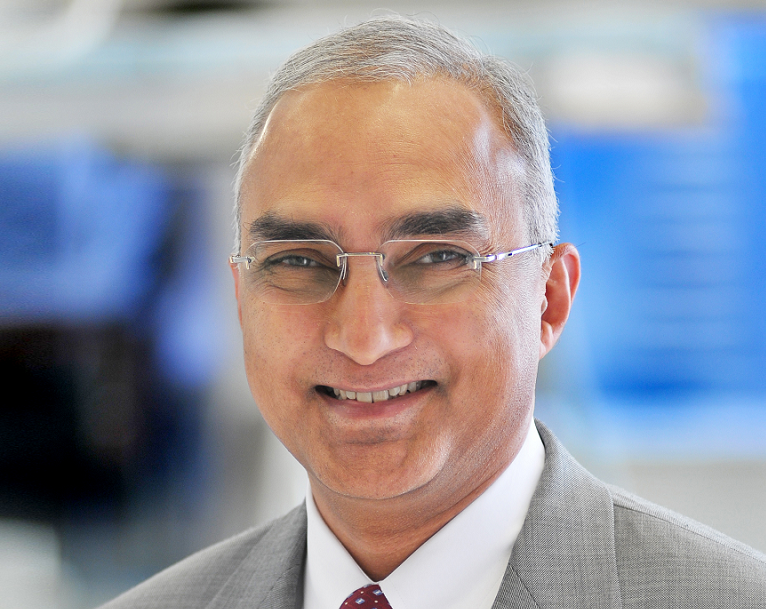Diabetes Awareness Month: What you should know
With November now underway, many people are looking forward to the holiday season and the great-tasting foods that are often prepared for holiday meals. However, Dr. Ashok Balasubramanyam would like to remind people that November also marks Diabetes Awareness Month.
“Diabetes is a very complex condition where metabolism in the body breaks down mostly due to the fact that either the insulin that the pancreas makes is not enough or the insulin that the pancreas makes somehow doesn’t work well or because of some combination of the two,” said Balasubramanyam, a professor in the department of medicine in the division of diabetes, endocrinology and metabolism at Baylor College of Medicine.
Acute and chronic complications
Balasubramanyam says it’s important to recognize that diabetes is not merely a disease of sugar. He said that when insulin doesn’t work properly, or when there’s not enough insulin, virtually every other metabolic pathway including the ones responsible for fat and protein all break down. With diabetes, your glucose, lipids, and protein metabolism are all impacted.
Balasubramanyam, who is also vice president for academic integration and senior associate dean for academic affairs at Baylor, said diabetes can also cause both acute and chronic complications. Examples of acute complications include diabetic ketoacidosis or hypoglycemia. Chronic complications can impact the kidneys, eyes, nerves, and the blood vessels. This is what makes diabetes a leading cause of blindness, cataracts, kidney failure, and neuropathy.

It’s also one of the major contributors to heart attacks, strokes, and peripheral vascular disease, which is the blockage of the arteries in the hands and legs that can lead to amputation.
“The problem with diabetes is that it starts off as an issue of sugar but quickly you find out that it’s not just a problem of handling sugar. You develop problems with lipids and protein metabolism, and finally you find out you can have these long-term complications,” he said.
Signs and symptoms
As far as symptoms go, Balasubramanyam said the most common ones are being very thirsty, having to urinate a lot, and having frequent infections. He also said that common treatment options include diet, exercise, and weight loss if you’re overweight. He explained that diet is important because it helps your body maintain a balance between the glucose you’re taking and the fats and proteins in your body. Exercise plays a significant role in diabetes management because it keeps your muscles strong and makes you more sensitive to insulin.
Balasubramanyam added that different medications are used for treatment depending on whether you have type 1 or type 2 diabetes. If you have type 1 diabetes, then you must be on insulin all of the time but how you give yourself the insulin may vary. For example, you could be given multiple shots of a short-acting insulin or a few shots of a long-acting insulin. Insulin can also be administered using a combination of the two or through an insulin pump.
If you have type 2 diabetes there are options for medication. The most common medication is Metformin because it’s effective and affordable. However, one of the problems with taking Metformin is that it’s not a permanent solution. After a few years the medication loses its effectiveness.
In order to help find a better solution to treat type 2 diabetes, Balasubramanyam is encouraging volunteers with type 2 diabetes who are on Metformin to enroll in the GRADE study. The aim of this multi-center, long-term study (funded by the National Institutes of Health) is to determine which combination of commonly prescribed diabetes medications is the best long-term treatment for people with type 2 diabetes. There are many benefits to participating in this study, including diabetes medications, clinic visits and blood tests at no cost for up to four years.
Assessing your risk
Although diabetes is a long-term disease, Balasubramanyam said there are lots of ways to delay diabetes. One of the best ways to start is by assessing your risk of getting diabetes.
The questions you should ask yourself to assess your risk include:
- Does your family have a history of diabetes?
- Are you becoming overweight or are you overweight at a young age?
- Are you indulging in lots of fast foods and especially sugary drinks?
- Have you had any of the early warning symptoms like excess urination?
Balasubramanyam said if you have any of these risk factors then you should immediately make a lifestyle change because this can reduce your risk of developing diabetes by up to 50 percent.
-By Julia Bernstein



